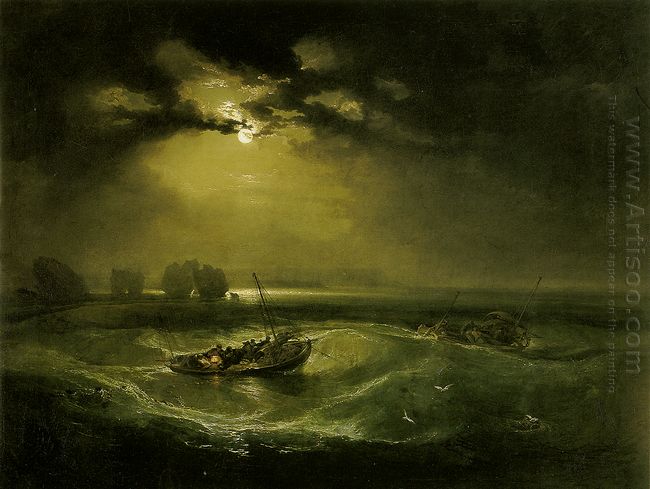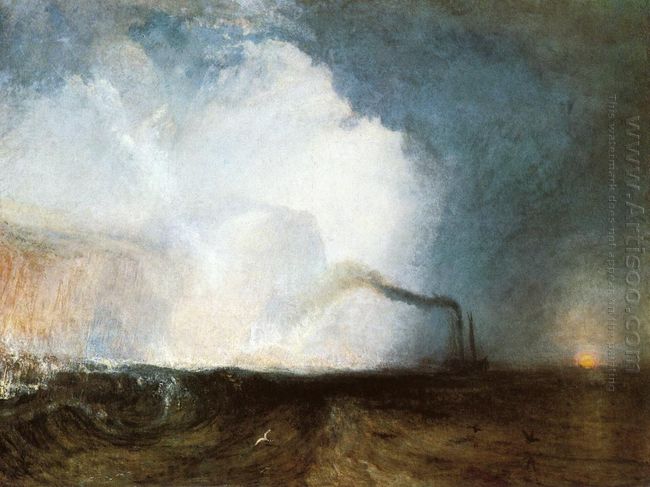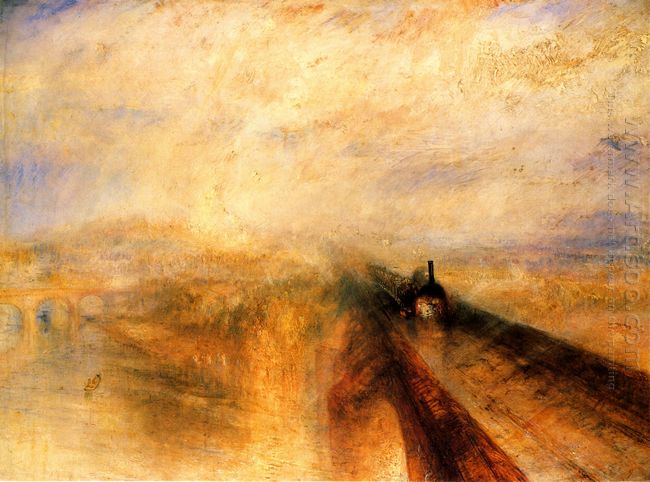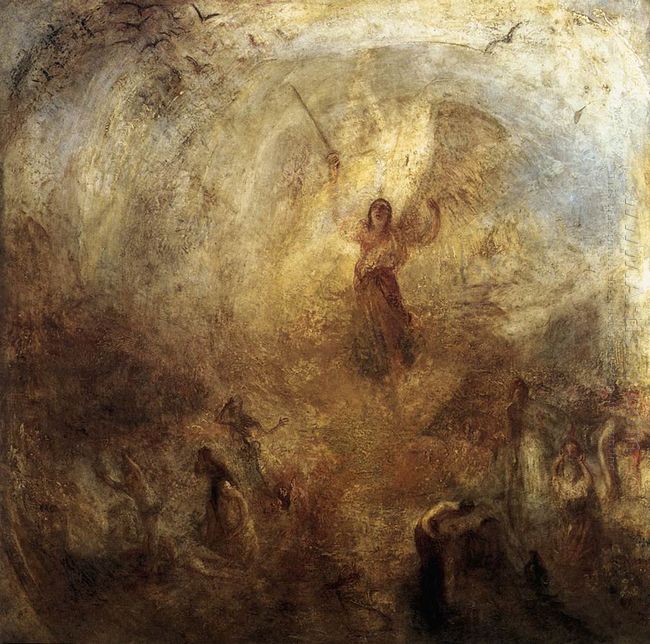Recently, it has been thought that a series of chalk rocks on the left side of Fishermen At Sea was the famous Needles rock group in the western end. However, now we think that what Turner drew was similar to the rock group in the freshwater painted by Edward Days.
In fact, in terms of the handling of light and shadow as well as the intertwined moonlight and firelight, Turner deliberately imitated the painting styles of previous artists, such as Claude-Joseph Vernet(1714-89), Joseph Wright of Derby(1734-97) and Philippe Jacques de Loutherbourg (1740-1812). Smooth strokes and delicate screen perhaps especially reflected the great influence of De Lu Taier Fort's mainland landscape technique on Turner. But the picture had showed the signs of a violent whirlpool structure, which would be an important element in their later works, such as Rain, Steam and Speed.
A series of early important harbor works of Turner won a big reputation for him (indeed, the theme of marine subject occupied a large part in all his oil painting works).In the year of 1818, Turner made Fishermen At Sea carved into print which was unable for publication for The Book of Research Drilling. The watercolor sketch details had changed a lot, but people still could obviously notice these are the same. It also showed that even after so many years Turner had a profound impression for his first successful painting. The combination of the moonlight and sea view was still the theme that could evoke memory and emotion in his works.





